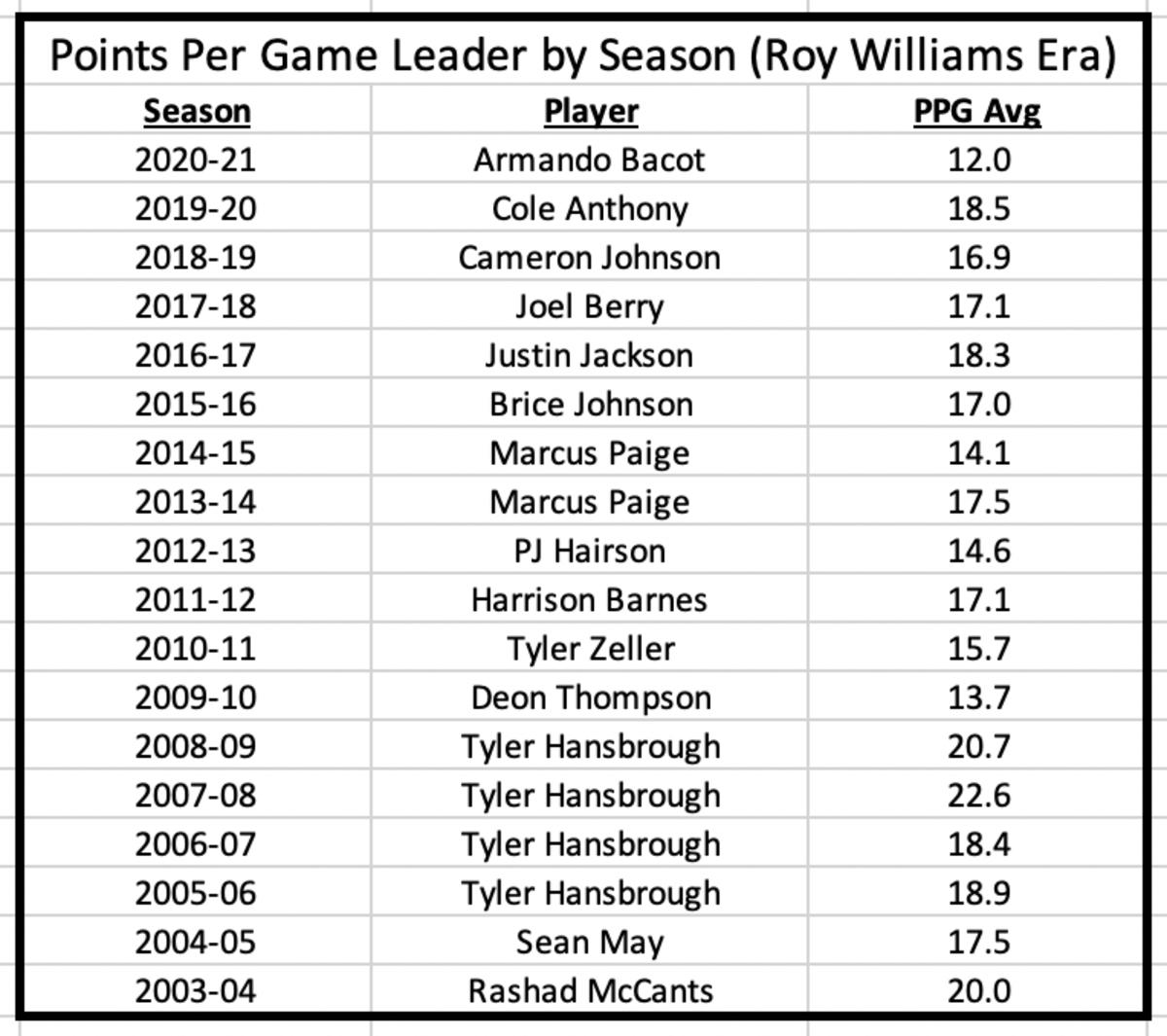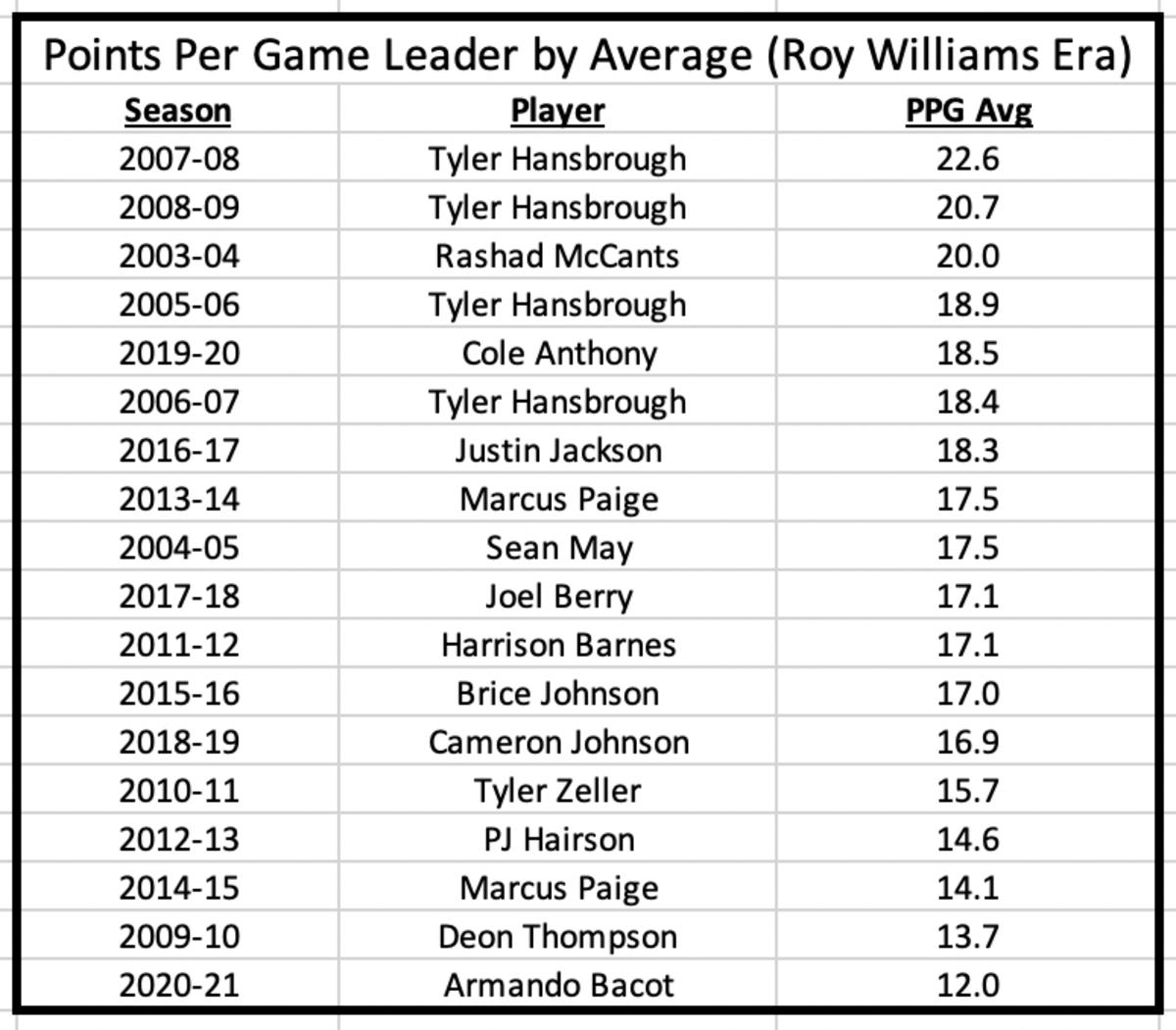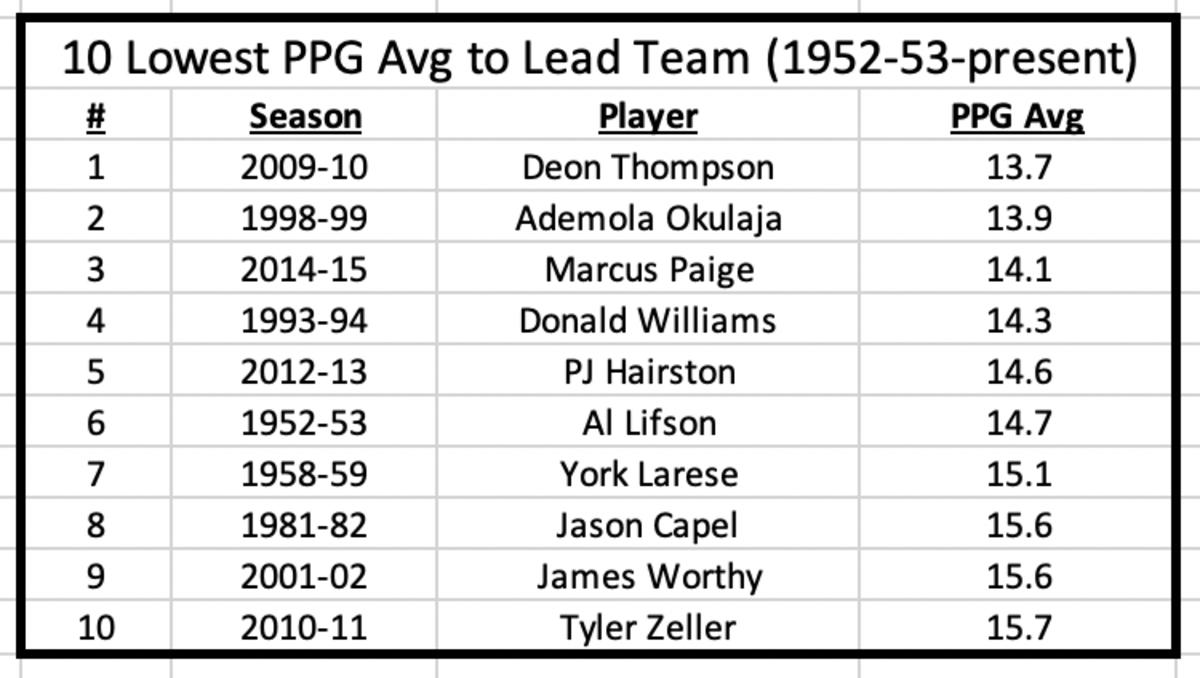Get That Man The Ball: Armando Bacot Leads UNC With a Historically-Low 12.0 Points Per Game
Armando Bacot is leading the 2020-21 North Carolina Tar Heels in scoring at 12.0 points per game (through January 23, 2021).
If that number strikes you as oddly low, you would be absolutely correct. Here’s the strange thing about it:
If the season ended today, Bacot’s 12.0 points per game would be the lowest points per game average to lead the Tar Heels since Jim Hamilton’s 11.4 mark in 1946-47. That’s three-quarters of a century ago! That’s six seasons before Frank McGuire became coach of the Tar Heels. For reference, the 1946-47 Tar Heels averaged just 53.1 points per game versus 74.5 this year.
For some other historical context, if you put Bacot’s 12.0 average on the 2008-09 Tar Heels he would have been just the fifth leading scorer on the team, behind Tyler Hasnbrough (20.7), Ty Lawson (16.6), Wayne Ellington (15.8), and Danny Green (13.1).
In the entire Roy Williams era (2003-04 through present), the previous lowest points per game average to lead the team was Deon Thompson’s 13.7 in 2009-10 (the season Carolina lost in the NIT finals to Dayton).
Here’s the entire list of leading scorers in the Roy Williams era, first chronologically, then in order of points per game average.


Frank McGuire Era (1952-53 – 1960-61)
Frank McGuire is the man responsible for Carolina’s first national championship and bringing players like Lennie Rosenbluth and Pete Brennan to Chapel Hill. The lowest average for a team leader in points per game in his coaching tenure was Al Lifson, who averaged 14.7 points per game in 1952-53.
Dean Smith era (1961-62 – 1996-97)
During the course of Dean Smith’s three and a half decades at the helm of Tar Heel basketball, the lowest points per game average to lead a team was 14.3 from Donald Williams in 1993-94.
10 Lowest Points Per Game Averages in the Modern Era
Let’s call the time from Frank McGuire’s coaching era until the present the “modern era” of North Carolina basketball. In that time (1952-53 through today), here are the ten lowest points per game averages to lead a team in scoring over the course of a season (not counting this year):

Historical context aside, what does Bacot’s team-leading, but uniquely low points per game average mean for this team?
Here’s the curious thing – Bacot is only averaging 7.07 shot attempts per game, but he is making 4.53 of them.
This begs the question: Why is Carolina’s leading scorer, who is making 64.2 percent of his field goals, attempting only seven shots a game?
Part of the problem is the freshmen-led backcourt. They are working hard at learning when to shoot, when to drive, when to swing the ball around the perimeter, and when to make a post entry pass. But Caleb Love and RJ Davis, just like every other freshman who walks through the door, are used to being the top dog on their team and therefore need space and reps to learn the reality that they are now on a team full of “top dogs”. In time they will learn to be more efficient scorers, but right now Bacot is in that role and they need to do everything they can to get the ball in his hands in a position to score.
Another part of the problem is that earlier in the season, prior to Kerwin Walton’s entry into the starting line-up, the Tar Heels were not shooting as well from the perimeter, therefore allowing defenses to clog up the lane. As shooting has improved, the lane has cleared out, giving Bacot (along with Brooks, Sharpe, and Kessler) more room to operate. A cleaner lane also means more opportunity to feed the post. Perhaps not-so-coincidentally, Bacot has notched double-digit field goal attempts in three of the past four games.
Sure, more field goal attempts would likely lower Bacot’s efficiency, but let’s say he doubles his shot attempts to 14 and his field goal percentage drops to 60 percent. Even with a slightly lower field goal percentage, averaging 14 field goal attempts per game at a 60 percent rate would bring Bacot up to 8.4 made baskets per game. That translates to 16.8 points per game on field goals alone. Factor in Bacot’s 2.93 made free throws per game and his average jumps from 12.0 points per game up to 19.73 points per game.
Even though that logic of increased field goal attempts equating to a lower field goal percentage makes sense, it hasn’t proven itself true in those recent three games with double-digit attempts. Bacot was 7-for-13 against Syracuse, 8-for-10 against Wake Forest, and 8-for-12 against NC State. That adds up to making 23 of 35 shots in those three games, a 65.7 field goal percentage. So Bacot’s efficiency has actually gone up with more shot attempts (albeit in an extremely small sample size).
What does this all mean?
Armando Bacot is leading the 2020-21 Tar Heels with a historically low average of 12.0 points per game.
It should be more.
Get that man the ball.
You can follow us for future coverage by clicking “Follow” on the top right hand corner of the page.
Send Isaac Schade an email to talk more about this article.
mailto:isaacschade@gmail.com
Follow us on Twitter: @SI_Heels | @isaacschade
Please post any comments below!
